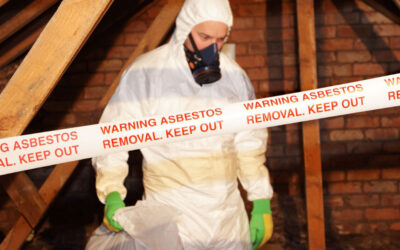Wildfires have become increasingly common and severe, impacting vast regions and creating significant concerns for air quality. While the immediate outdoor effects are visible, wildfire smoke can also infiltrate homes, posing serious risks to indoor air quality. Understanding how smoke enters homes, the types of pollutants it carries, and the specific risks to indoor environments is essential for protecting your health and maintaining a safe living space.
How Smoke Infiltrates Homes
Wildfire smoke can penetrate homes through various entry points, often in ways you might not expect. Here are some common entry points for smoke:
- Windows and Doors: Even when closed, small gaps around windows and doors can allow smoke to seep into your home. Poorly sealed windows and doors are major culprits.
- Ventilation Systems: Smoke can enter homes through HVAC systems, especially if they are not equipped with proper filters. Air conditioning units and vents can draw in smoky air from outside.
- Cracks and Gaps: Small cracks in walls, foundations, and around utility lines provide pathways for smoke to enter. Older homes are particularly susceptible to these issues.
- Fireplaces and Chimneys: If not properly sealed, fireplaces and chimneys can allow smoke to enter your home, compromising indoor air quality.
Types of Pollutants in Wildfire Smoke
Wildfire smoke is a complex mixture of gases and fine particles from burning vegetation, building materials, and other substances. The pollutants found in wildfire smoke include:
- Particulate Matter (PM2.5 and PM10): Fine particles that can penetrate deep into the lungs and even enter the bloodstream. PM2.5 particles are particularly harmful due to their small size.
- Carbon Monoxide: A colorless, odorless gas that can reduce the amount of oxygen in your bloodstream, posing serious health risks.
- Volatile Organic Compounds (VOCs): Chemicals such as benzene and formaldehyde that can cause long-term health effects, including cancer.
- Polycyclic Aromatic Hydrocarbons (PAHs): Organic compounds that form during the incomplete burning of organic materials and are known to be carcinogenic.
- Nitrogen Oxides: Gases that can irritate the respiratory system and contribute to the formation of smog and acid rain.
Risks to Indoor Air Quality
The infiltration of wildfire smoke into homes poses several risks to indoor air quality:
- Respiratory Problems: Inhalation of fine particulate matter and gases can exacerbate respiratory conditions such as asthma and COPD, and cause symptoms like coughing, wheezing, and shortness of breath.
- Cardiovascular Issues: Exposure to particulate matter is linked to an increased risk of heart attacks, strokes, and other cardiovascular diseases.
- Eye and Throat Irritation: Smoke can cause irritation of the eyes, nose, and throat, leading to discomfort and potential infection.
- Long-Term Health Effects: Prolonged exposure to wildfire smoke can result in chronic respiratory and cardiovascular conditions, as well as an increased risk of cancer.
How Indoor Air Can Be Compromised
- Poor Ventilation: Homes that lack proper ventilation can trap smoke and pollutants inside, leading to higher concentrations of harmful substances.
- Inadequate Air Filtration: Without high-efficiency air filters, HVAC systems can circulate smoky air throughout the home, failing to remove harmful particles.
- Accumulation of Pollutants: Over time, pollutants can accumulate on surfaces and in fabrics, contributing to long-term exposure even after the smoke has cleared.
Protecting Indoor Air Quality
To safeguard indoor air quality during wildfire season, consider the following measures:
- Seal Entry Points: Ensure windows and doors are properly sealed, and use weatherstripping to close gaps. Consider using smoke-resistant seals around vents and utility lines.
- Use High-Efficiency Air Filters: Equip your HVAC system with HEPA filters to capture fine particles. Regularly replace filters to maintain their effectiveness.
- Invest in Air Purifiers: Use portable air purifiers with HEPA filters in key areas of your home to reduce indoor pollution levels. Aspen Air Purifiers, for example, offer professional-grade air purification for spaces up to 1,500 square feet.
- Limit Outdoor Air Intake: During high smoke events, minimize the use of exhaust fans that draw air from outside, and keep windows and doors closed.
- Monitor Indoor Air Quality: Use indoor air quality monitors to track pollution levels inside your home and take action when necessary.
Wildfire smoke poses significant risks to indoor air quality, but by understanding how it infiltrates homes and the types of pollutants it carries, you can take proactive steps to protect your living environment. Implementing measures such as sealing entry points, using high-efficiency air filters, and investing in air purifiers can help ensure you and your family breathe cleaner, healthier air during wildfire season and beyond.


